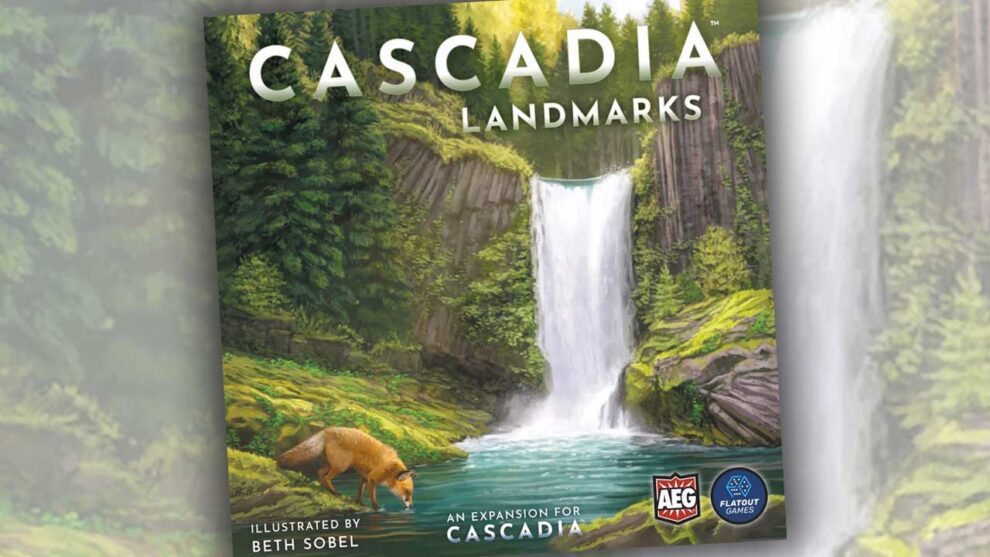Disclosure: Meeple Mountain received a free copy of this product in exchange for an honest, unbiased review. This review is not intended to be an endorsement.
Back in 2020 we reviewed Cascadia, a deceptively simple tile laying and tableau building game from Flatout Games, who were coming off back to back successes with Calico and Point Salad. Since that time Cascadia won the Spiel des Jahres in 2022, and landed solidly in the top 100 games on hobby site BoardGameGeek. So it should come as no surprise that publisher AEG and developer Flatout Games are doubling down on their investment and releasing Cascadia: Landmarks, along with two new standalone roll and write games called Cascadia: Rolling Rivers and Cascadia: Rolling Hills—each exploring and celebrating a specific habitat in that area.
But it’s Cascadia: Landmarks we’re talking about today. Since it’s an expansion for the base game, I won’t be covering standard gameplay (you can read my review of Cascadia here), and instead I’ll just be talking about what the expansion brings to your table.

Cascadia: Landmarks Overview
One of the things I liked best about Cascadia was the variety, the input randomization. When setting up the game, you selected (or chose at random) one card for each different animal (elk, bear, fox, salmon, and hawk) and used that one for scoring. This meant that your focus could be noticeably different from game to game. In one game, you might score an increasing number of points for every pair of bears, while in another game you scored 10 points for a group of three. Or an increasing number of points for single hawks, or an increasing number of points for every hawk that is in a straight line of another hawk.
This variety affected everything about the game: which tiles you selected, which animals you tried to pick up, etc. You’ll be happy to know that Cascadia: Landmarks not only maintains that, but amps it up by adding the titular landmarks. Now in Landmarks, in addition to scoring points for animal cards and for habitat majority, you also have the opportunity to select a special scoring card for each of the five types of area (rivers, wetlands, mountains, prairies, and forests).
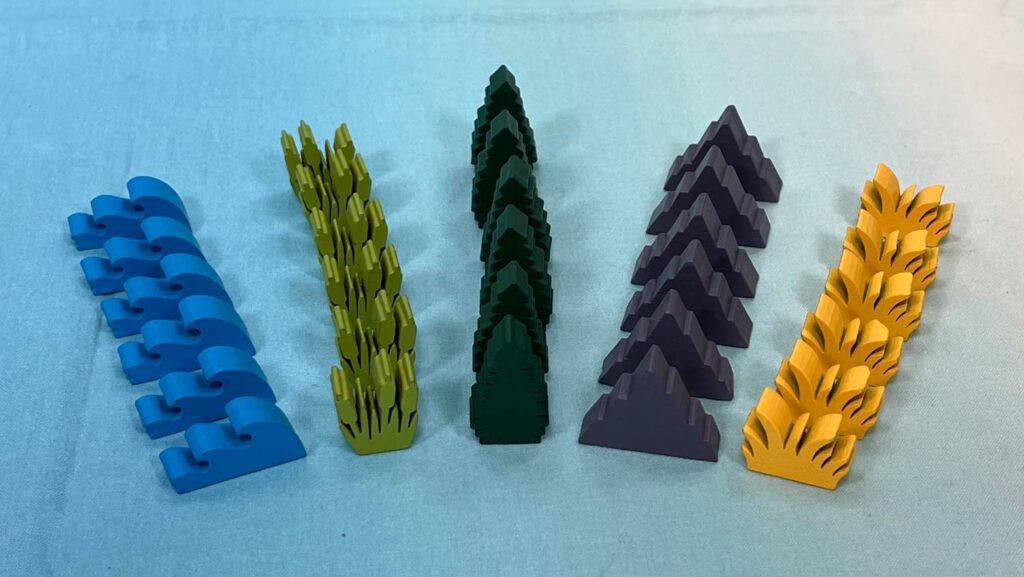
At the beginning of the game, pull out a number of cards from each habitat group, based on player count. These cards offer special scoring conditions that only the holder of that card can earn. You might ask how you get these cards…and while it’s simple to explain, it can be a challenge to achieve.

Play Cascadia as normal, but once a player has placed a habitat tile which gives them an unbroken group of five tiles of that particular habitat, they’ll be able to select a card of that type from the set aside cards. In addition, they receive a wooden landmark token which they must place on that tile. The remainder of the game is played as normal, although as you might have noticed, the sooner you complete a set of five habitat tiles, the better your options are. Note that each player may only complete one landmark per habitat.
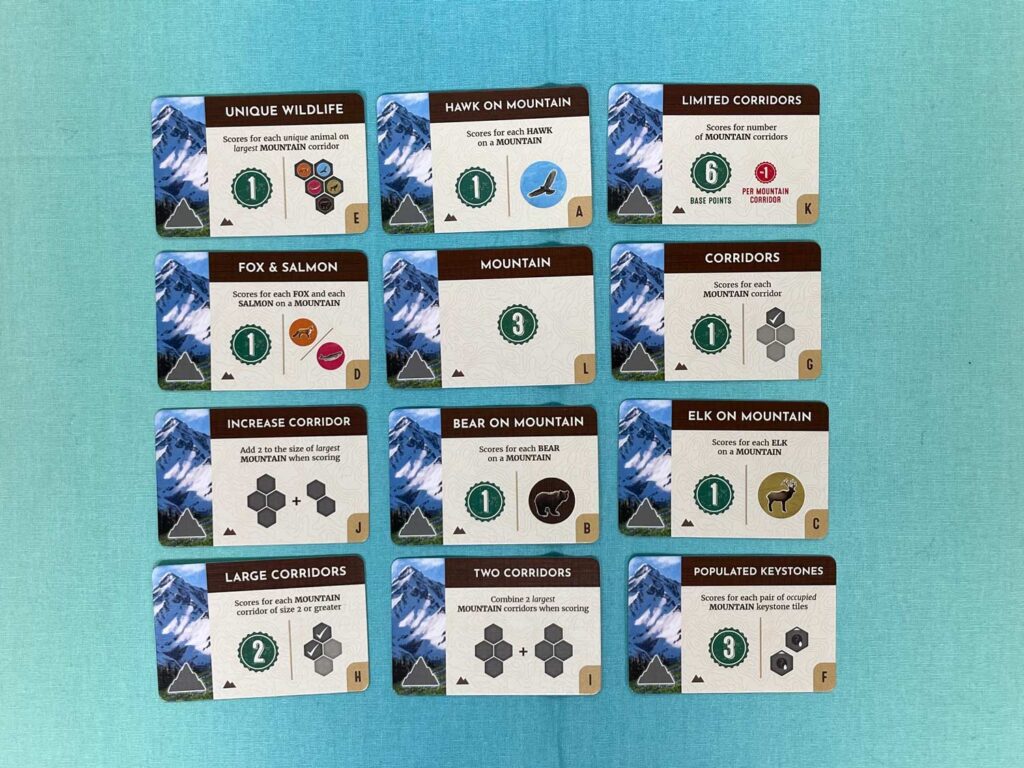
Once the game ends, as normal, plays will tally up points from animals, habitat scoring, and finally the landmark cards. The player with the most points is the winner.
So what does Cascadia: Landmarks bring to the table?
Oh, right. I guess you’d like a bit more detail about those cards…and I suppose I could show the awesome wooden tokens, too, right? Cascadia: Landmarks adds quite a lot to the base game, so much so that in order to fit everything in one box (that’s just how I roll) I had to toss the original insert…and even then it’s a tight fit.
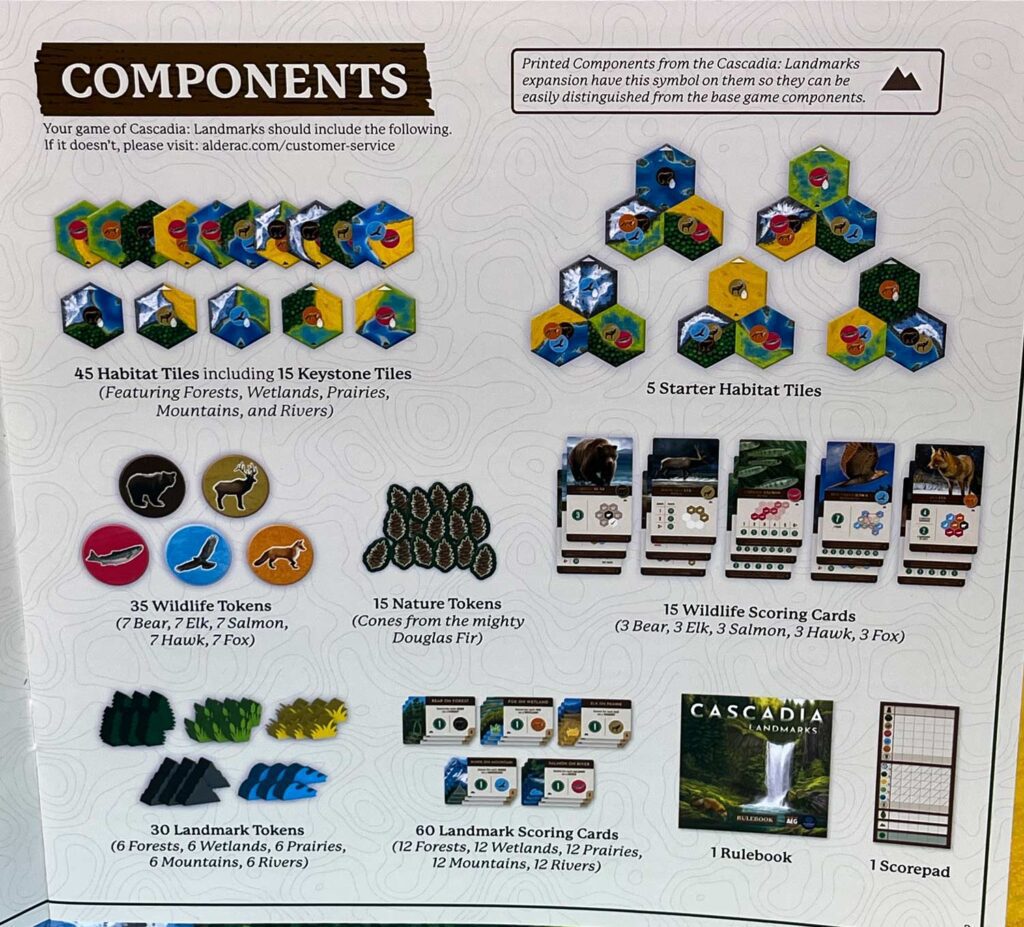
- Enough bits and pieces to support a 6th player.
- New starter tiles
- A number of new Keystone tiles, including some with multiple animals instead of just one.
- More animal tokens
- More Nature tokens
- 15 new animal scoring cards
- 30 Landmark tokens
- 60 Landmark scoring cards
- New scoring sheets with the increased player count, and a row for Landmark scoring
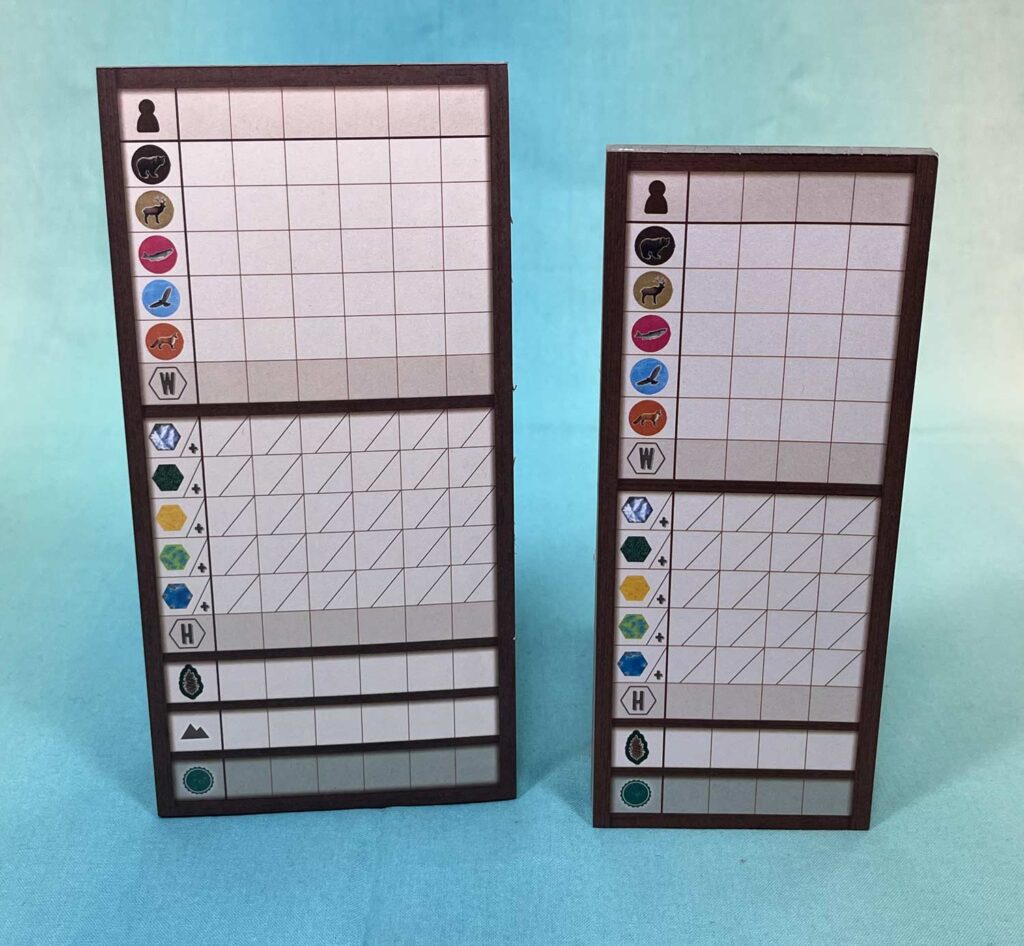
Final Thoughts about Cascadia: Landmarks
I’ve played Cascadia many times, and with a number of different players, and it’s always enjoyable. Because of the random draws of tiles and animal tokens, as well as the different animal scoring cards, you never know exactly how a game will play out. This requires you to think on your feet while still keeping your goal in sight.
And now, with Cascadia: Landmarks, and the new scoring cards, you’re given the chance to double down on whichever strategy you’ve already put in place. These new cards cover a wide range of scoring possibilities. Earning points for specific animals on a tile, making it easier to win majority scoring for habitat types, allowing you to combine multiple habitats into one for habitat scoring, or even bonus points for having more of a specific sort of habitat. These new cards could make the difference between beating Aunt Carol or having to listen to her brag about her victory at the next family dinner.
Should I buy Cascadia: Landmarks?
If you’re new to Cascadia, this isn’t a must-buy for your first plays of the game. But Cascadia: Landmarks is a great choice for someone who already owns and loves the base game. It’s the perfect sort of expansion: add in the parts you want and start playing. If you just want to play with 6 people, then leave out the Landmarks. But once you’ve got a little experience with Cascadia, you’ll want to revisit it time and time again. And now with those Landmarks, the time spent is even sweeter.


